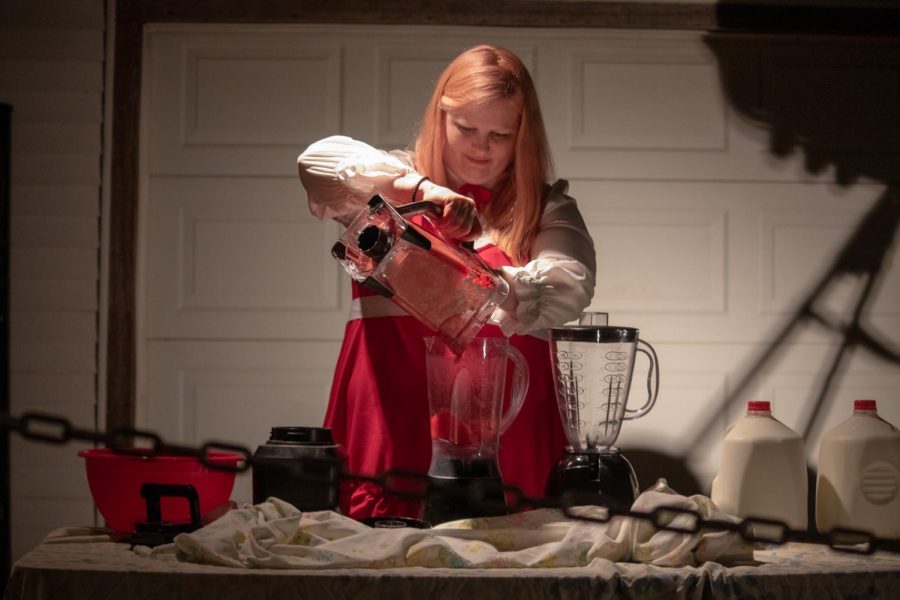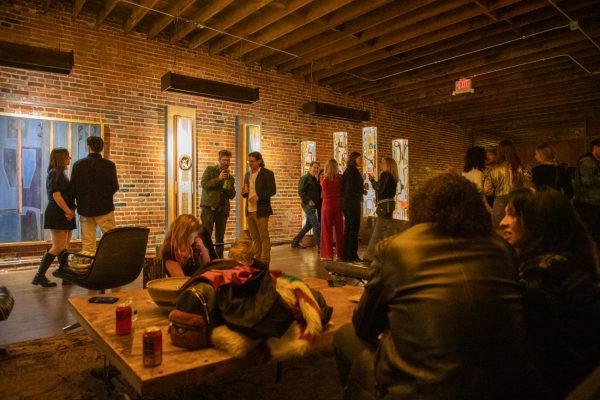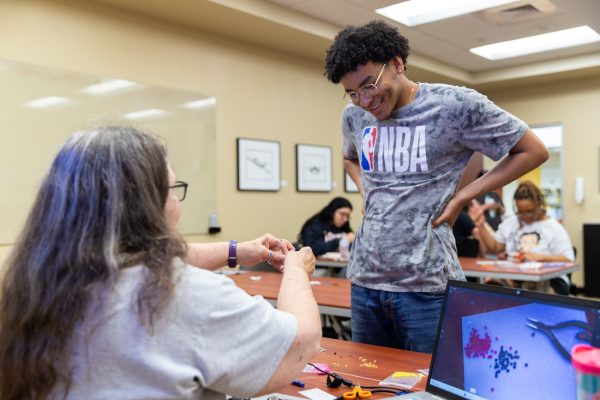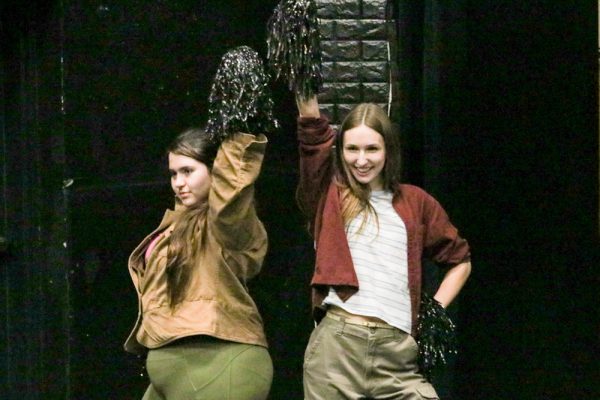What not to miss at Monikahouse’s last show this Friday
MFA Fine Arts Candidate Monika Maddux during her performance at the Monikahouse.
Monikahouse, the life-sized dollhouse created by MFA Fine Arts Candidate Monika Maddux, has its last opening in its current series of showings this Friday. While the Sunflower has had the privilege of covering the exhibit several times before, we now bring to you a special guide to the exhibit featuring the words of Maddux herself. Here’s what you shouldn’t miss at Monikahouse this Friday.
The Literal Booby Trap (Downstairs, at the back left edge of the house)
At the very back of the house, in one of its darkest corners, there’s a gated-off staircase that’s easy to miss. Search for it and you’ll find one of the house’s punniest exhibits. Down the staircase, red cloth is draped to create a birth canal-like tunnel where the baby would theoretically crawl. At the end is a metal trap containing none other than a pair of breasts. It’s both an entrancing exhibit and a dark joke.
Maddux, who suffered several miscarriages while struggling for years to give birth to a baby girl, often uses humor in her exhibits as a means of balancing the darkness. It’s a choice she makes both for her art and for herself.
“I’ll be talking about something so sad or so serious, and then I’ll burst out with something, you know funny, like, let’s drink this blood,” Maddux said. “That’s my own coping mechanism, you know? Either I can burst out and start crying or I can say something funny.”
The Reality Room (Upstairs, right of the staircase, at the end of the hallway)
Perhaps the most subtly disturbing room in the house is also one of the most subdued. At the end of the upstairs hall is a dark room containing piled furniture draped under ghostly linens and plastic. It’s called the reality room because the disused furniture, not the art exhibits, replicates the fallout of a child’s absence. Whereas the other exhibits create a new expression through repurposed furniture, the reality room bears the entire weight of what cannot be used to its designed intent.
Because most of Maddux’s inherited furniture is used in the other exhibits, the reality room is the product of a lucky acquisition made when acquiring the house itself.
“So this house was furnished a bit . . . for the past two years, so we took all the furniture and put it in here . . . It’s the idea,” Maddux said. “It’s not all the little girl furniture, but you can just imagine that, floor to ceiling — overwhelming.”
The Obsessive Room (Upstairs, directly left of the staircase)
One of the most striking rooms in Monikahouse features an overwhelming array of pink and pictures arranged above an ottoman. The ottoman itself bears a permanent indentation, as if testifying to a person sitting there for hours on end, over and over again, surveying the pictures in front of them. Part of that art is couched in an abstract representation of obsessive mourning, but part of it is very real.
When Maddux had installed a previous version of the room in McKnight Art Center, she would sometimes sit in the room as a place of comfort. No one else was allowed to enter the exhibit — only to look inside. That created a sort of emotional refuge for Maddux, and she ended up sitting in the room just as if she was, in fact, creating the indentation in the ottoman herself (the indentation is actually formed by carving out a bottom-shaped mold in the ottoman). Over the course of the project, Maddux became increasingly aware of the emotional distance she sometimes used to navigate creating such an intense, personal piece of art.
“I made it like it wasn’t me making it,” Maddux said. “But it was me making it . . . I say well, if I was a crazy person, then I would do this . . . If I wasn’t the way I am, then my work wouldn’t be the way it is.”

John Darr was a reporter for The Sunflower. His main interests were local art, student life, experimental literature and ambient pop music.













